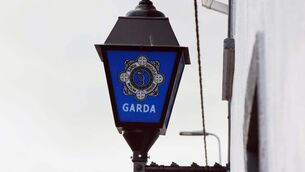Shock advertising has no impact on driving of young motorists, says research

One presentation on the dangers from 80km/h roads explained how for younger people, the car could be 'one of the few places where they experience freedom and control'. File photo
Road safety research showed that shock advertising was proving ineffective with young men who love driving, think they ‘know’ the roads, and overestimate their motoring skills.
In a series of campaign presentations and internal briefs, the Road Safety Authority (RSA) was told that poor driving was reinforced by the fact younger people believe they will never be caught.
One presentation on the dangers from 80km/h roads explained how for younger people, the car could be “one of the few places where they experience freedom and control”.
A slideshow, prepared by a leading marketing agency, said after a feeling of being “trapped” during covid-19, they were now determined to live “life to the fullest”. It said they were a generation marked by “their rejection of authority and marketing” which meant it was challenging to get through to them.
The presentation explained: “As a result, they have high barriers to being ‘marketed’ to,” adding that they were in their “peak rebellion” phase. It said it was important not to criticise their driving and that messaging shouldn’t come from a “source of authority”.
A recap of what was known about young motorists who engage in dangerous behaviour said: “Their ego is inflated when it comes to their driving — they perceive themselves as being ‘good’ drivers.
“Due to this message, they have a high chance of disengaging from safety messaging. Fear [or] shame-based messaging doesn’t work especially for high-risk audiences.” It said they often didn’t see their driving as “being problematic” so they might not respond to marketing that implied they were high-risk.
One suggestion from the presentation was: “We need [to] communicate in a way that they will opt into. And that will require us to speak to them the way they see themselves — as good drivers.”
It said some younger men believed they were able to “negotiate” with speed limits because of their skills behind the wheel. The presentation said there could also be a ‘James Bond effect’ at work where fast driving was seen as synonymous with “power, wealth, sexual attractiveness, [and] social status”.
It added: “This audience will reject both authority and advertising. At present, they perceive the Road Safety Authority as both of those things. We need to reframe how they see the RSA from something they will outright reject, to something they opt into.”
The slideshow added that the focus of future campaigns could centre around humour, the use of comedians, and TikTok.
Another presentation on future road safety messaging said that while many people were aware of the growing number of fatalities on Irish roads, this was lowest among ‘Gen Z’.
It said younger male drivers overestimated the benefits of speeding and their ability to drive when drinking or after taking drugs. The slideshow added that they “underestimate the chances of getting caught using [a] mobile” and were overrepresented in road deaths where a seatbelt wasn’t worn.
It also detailed the challenges of reaching audiences through TV and said live sport and podcasts were often the best way to reach younger people.
A spokesman for the RSA said current data showed that male drivers under-35 were over-represented across all bad driving behaviours, from speeding to driving under the influence.
He said: “The reasons for this are numerous. This cohort has a greater tendency to take risks, and their peers are more likely to normalise speeding.
“But one of the most significant factors is this group’s strong optimism bias — they tend to overestimate their driving abilities and underestimate risk, which collectively make them believe they are ‘good drivers’.”
The spokesman said messages that relied on “fear” and “shock” could be ineffective and while people might remember them, they didn’t necessarily lead to changes in behaviour.
He added that proven strategies for these drivers included informative and empowering campaigns that used emotions like humour, focused on day-to-day realities and didn’t portray drivers as villains.









